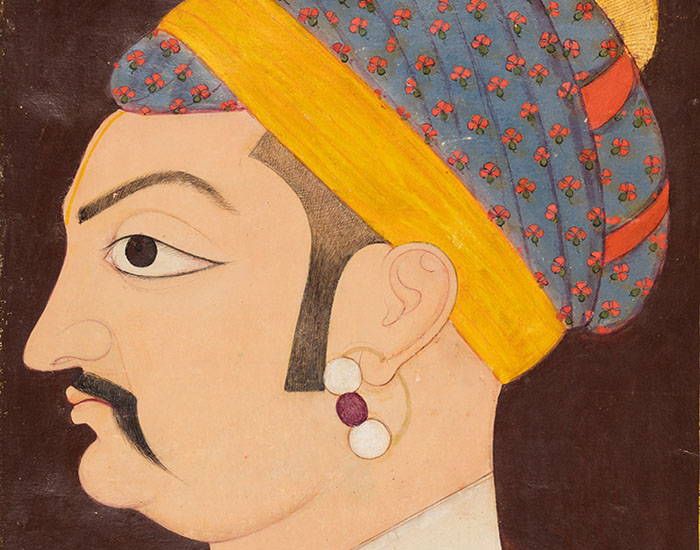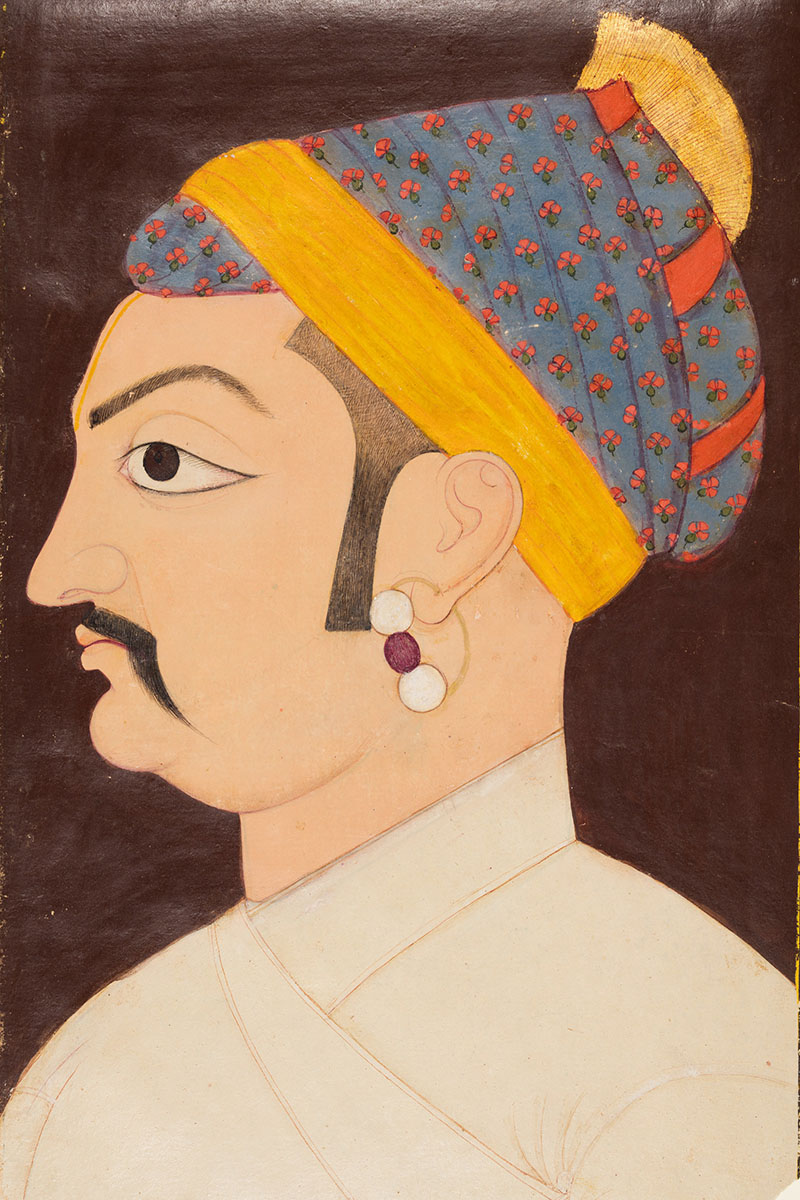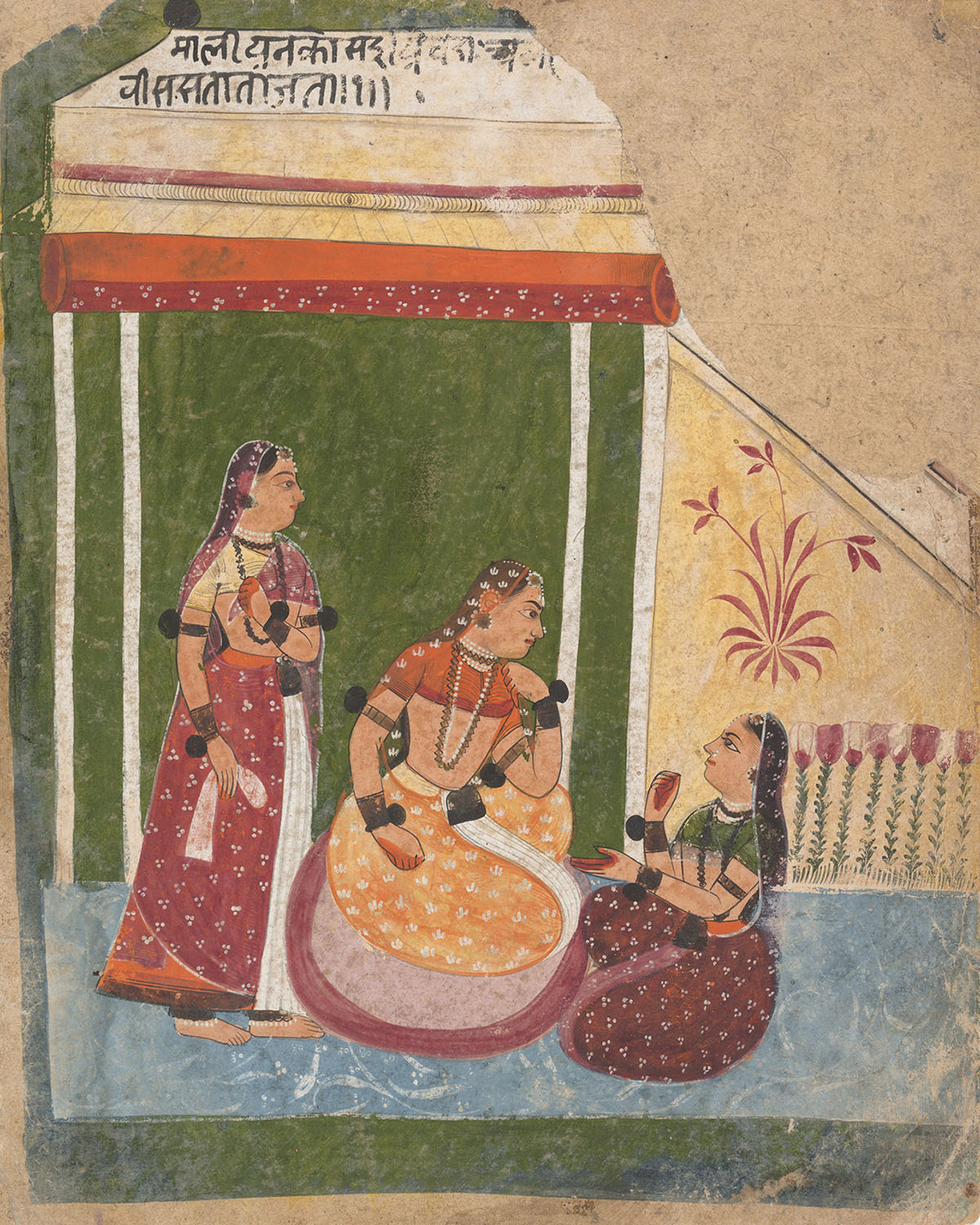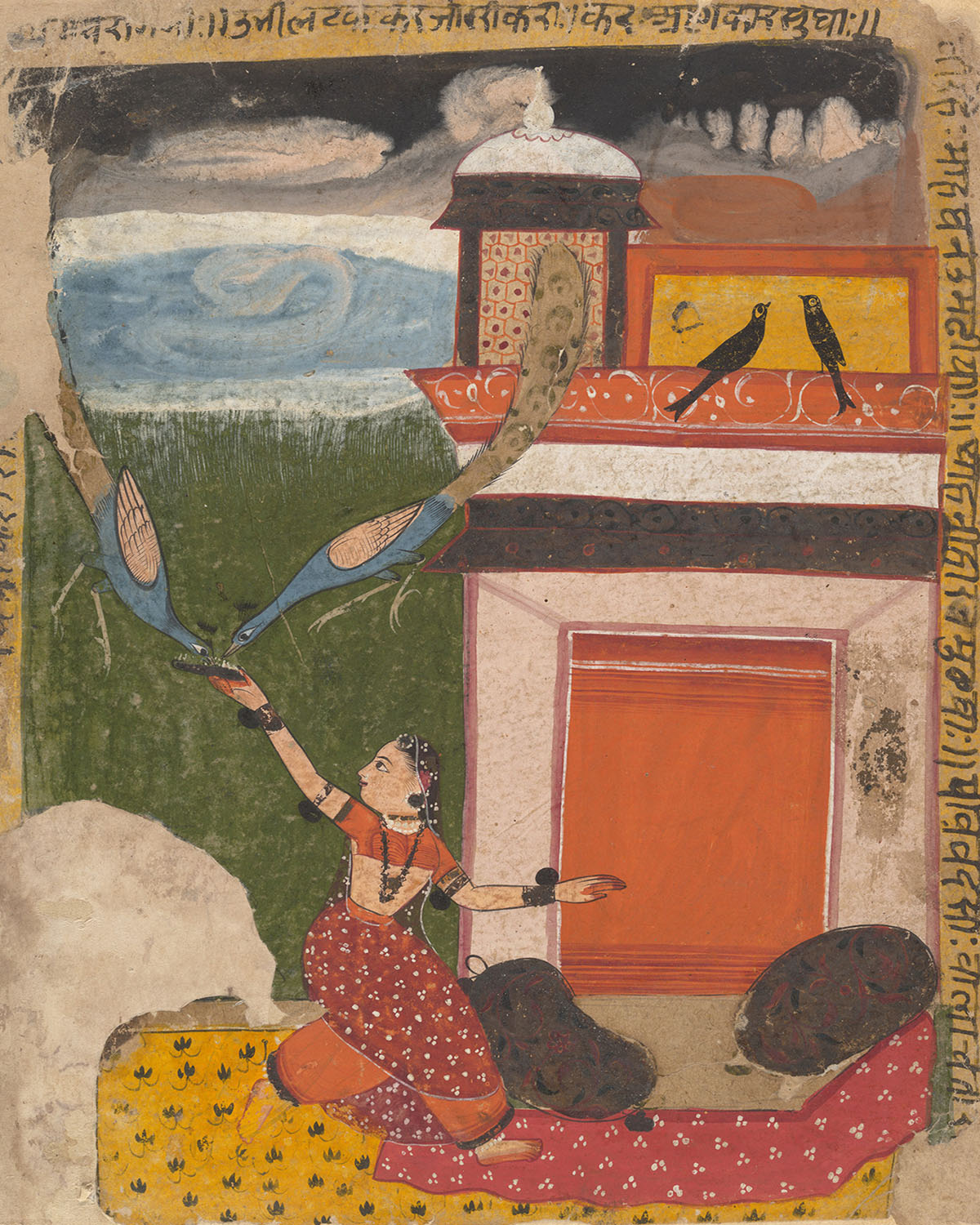Encyclopedia of Art > Articles
Marwar School of Painting

A style of court painting established in the erstwhile state of Jodhpur, also known as the kingdom of Marwar, the Marwar school of painting was prominent from the seventeenth to the nineteenth centuries. Classified within the broader category of Rajasthani manuscript painting, it is also notable for being a centre of art production that was deeply influenced by the imperial Mughal atelier.
An artistic tradition known as the Western Indian or Jaina painting style predated an early Rajput painting tradition, which emerged during the sixteenth and early-seventeenth centuries. A series of ragamala paintings – dated to 1623 and painted in Pali – reflect this style in their treatment of the sky, the shape of the eyes and a muted use of reds.
In 1556, Akbar became the Mughal emperor and seized a large part of the state of Jodhpur soon after. A conciliation in 1583 gave the rulers of Jodhpur a place in the highest circles of power in the empire. In the following century, during the reigns of Raja Gaj Singh and Maharaja Jaswant Singh, the Mughal influence became prominent in the culture of Marwar, including in its court painting. This influence is visible in the naturalistic visual style, refined draughtsmanship, and detailed depictions of costume and jewellery in works from this phase of Marwar painting. Some other conventions characteristic of this period include the depiction of figures in profile, a funnel-shaped style of turbans, slender and spiral-shaped clouds, and an abundant use of yellows, greens and blues.
The Jodhpur state also contained several subsidiary political centres, called thikanas, such as Pali, Nagaur, Ghanerao, Sirohi and Sawar. Here, it was the traditional Rajput painting style that continued to prevail, as evidenced by the Ragamala series of 1623 and a Meghaduta manuscript dated to 1699. This was characterised by a relatively flat treatment of images, bolder hues and the use of colour to demarcate multiple scenes within a single image. This traditional style underwent a revival as the Mughal influence waned in the eighteenth century after the decline of court-patronised art during Aurangzeb’s reign and, later, the decline of the Mughal Empire in general.
By the late-eighteenth century, Marwar painting was marked by an extravagance in the depiction of costumes, human figures, and the use of colour. In the nineteenth century, these paintings became even more decorative in style. While the themes depicted focussed on courtly life, the paintings themselves were characterised by oddly proportioned human figures, garish palettes, and poor draughtsmanship. The arrival of European art towards the end of the nineteenth century cemented the decline of the Marwar school.
First Published: April 21, 2022
Last Updated: July 26, 2023




